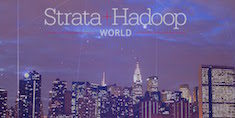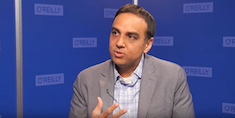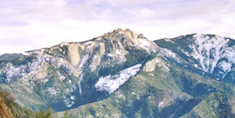
From Defense to Offense: Shifting the CDO Mindset
Regardless of industry, size, maturity, or a variety of other organizational factors, CDOs are converging around some core ideas of what their role is—and what that means for their mission.
Julie thinks in metaphors and finds beauty in the clear communication of ideas. She is particularly drawn to visual media as a way to understand and transmit information, and is co-author of Beautiful Visualization (O’Reilly 2010) and Designing Data Visualizations (O’Reilly 2011). Concurrent with her work at SVDS, she spent three years as a staff teacher in the Design for Social Innovation masters program at the School for Visual Arts in New York City.
Julie holds an MS in Political Science (International Relations) from Rutgers University–Newark, and a BA in English from Calvin College.

Regardless of industry, size, maturity, or a variety of other organizational factors, CDOs are converging around some core ideas of what their role is—and what that means for their mission.

A lot of people who are new to data visualization feel that they have to design something novel and amazing in order for it to have impact. But novelty is the icing, not the cake. It is not the core of a what makes a data visualization successful (or not).

Stories are all about relationships, and so are data. It’s not the datapoints, or the nodes, that matter—it’s the edges between them that paint the trendlines and allow us to say something about our future.

Data strategy matters to both business and tech. It’s a problem that sits in the center of a Venn diagram, and if we get stuck thinking of those two domains as existing solely in completely separate silos, we’ll lock ourselves out of that key middle ground where the really important problems get solved.

In this post, Julie talks about the necessary skills for a CDO, as learned through her research for the “Understanding the Chief Data Officer” report.

At the Strata + Hadoop World conference in New York last week, there were an impressive 16 tracks of session talks. A lot of them focused on the tools that everyone is excited about, but I focused on the goals people are using data science to accomplish. Here are a few of the sessions that stood out.

Failure is appealing as a stepping stone along the path to innovation, but it’s very scary in practice—especially when you can’t yet see where the path is leading. We’d like to suggest the following five guidelines as a place to start.

This month’s Throwback Thursday feature looks at some frequently asked questions about the role of the Chief Data Officer. An updated report will be forthcoming in September.

Last month, SVDS CEO Sanjay Mathur spoke at O’Reilly’s conference on engineering leadership, Cultivate, about Eating Change for Breakfast. While on site at the event, he spoke with Radar’s managing editor, Jenn Webb, about creating an Experimental Enterprise.

The role of the Chief Data Officer (CDO) continues to gain attention and proliferate as more companies hire them, and others wonder with increasing anxiety whether they should, too. The promise of data and the business value it can unlock is tantalizing, but also somewhat confusing to many organizations — the role of the CDO is, too.

Parts 1 through 3 of this series looked at our preferred scenarios and best practices for instant messaging, video conferencing, and phone meetings. This final installment focuses on email.

Parts 1 and 2 of this series looked at our preferred scenarios and best practices for instant messaging and video conferencing. This post focuses on phone meetings.

In Part 1 of this series on effective communication with remote colleagues, I looked at our preferred scenarios and best practices for instant messaging. This week, I’m sharing some thoughts about video conferencing.

We believe that when even one colleague is remote, then we’re all remote — from someone. This post is the start of a four-part series covering modern communication tools, beginning with some hard-won lessons about etiquette and best practices for instant messaging; and future posts will cover video conferencing, phone meetings, and email.

Scott Kurth, John Akred, and Julie Steele discuss developing a modern data strategy during an Ask Me Anything at Strata NY 2015. This was originally posted on the O’Reilly Media Data blog.

The CDO is still a relatively new position and there isn’t yet a strong consensus about the exact job description, reporting structure, or qualification set.

Failure is appealing as a stepping stone along the path to innovation, but it’s very scary in practice—especially when you can’t yet see where the path is leading. We’d like to suggest the following five guidelines as a place to start.

When it comes to data strategy, many people read the “data” part and automatically dump the topic in the “technical” bucket.

This event’s strongly recurring themes included the Pandas library and a fascinating host of wetware issues woven into otherwise technical sessions.
The Data Strategy track of our webinar series focuses on creating and continuously updating your data strategy. Register now!
Sign up here for a highly interactive online seminar with SVDS Director of Communications Julie Steele and Ancestry Chief Data Officer Amy Gershkoff. They will discuss what it means to be a data-driven company—and how a Chief Data Officer can help make that a reality.
We’ll be in Boston covering a variety of topics—from running agile data teams, to visual storytelling with data. Let us know if you’ll be there, or sign up to receive all our slides.
Come find us in Austin this December. Principal Data Strategist Colette Glaeser and VP of Strategy Edd Wilder-James will be discussing how to develop a data strategy. Director of Communications Julie Steele will provide insight into how to best leverage your data through visualizations.
Join us in Santa Clara as we talk about managing data science in the enterprise, data valuation, and best practices for data visualization.
The SVDS crew will be in New York this year, talking about data platforms, data strategy, and making the business case for Spark. Come by our talks, or catch us in the hallway track.
Director of Communications and author of “Understanding the Chief Data Officer: How Leading Businesses Are Transforming Themselves with Data” Julie Steele will be at the conference, attending sessions and researching the upcoming Second Edition of her report.
Joy Bonaguro, first Chief Data Officer for the City and County of San Francisco, joins Julie Steele, SVDS Director of Communications and author of Understanding the Chief Data Officer for this interactive online seminar.
Several of us will be at the Strata + Hadoop World 2015 Conference in New York in September and we’d love to see you there. Join us for our tutorials and sessions, or come visit us at our booth in the Expo Hall.
SVDS presents two sessions at the Open Source Convention: A tool-agnostic tutorial for those who want to elevate the look and feel of their data visualizations; and a talk that will explore some overall best practices for sharing IPython Notebook code within a data science team.
We will present two talks at #DDSea: one on creating visual hierarchies in data visualization, and another on running data science teams. Plus, hear from Idibon about a project we did together for Edmunds.com.
On this episode, “The Chief Data Officer—A New Leader for Data Management?” host Eric Kavanagh interviews Julie Steele of SVDS, Brad Peters of Birst, Bruno Aziza of AtScale, and Rado Kotorov of Information Builders.